Part IV of a four-part series of blog posts covering intellectual property and board games.
Okay I have my patent and my intellectual property clearance, am I good to go?
In cases where a board gamer designer steals intellectual property from another designer, they need to be taken to task, held financially responsible for their theft, and enjoined from continued infringement. Patents, as well as copyright and trademark registrations make it easier to determine the exact scope of intellectual property protection a board game has. This makes it easier for other game designers to gain inspiration while avoiding infringement and for owners of the intellectual property to stop infringers. But here are more things to consider than just patents, copyrights, and trademarks.
What is protectable and what is not?
Intellectual property laws define the metes and bounds of what parts of new board games developers are allowed to protect and which parts they are not allowed to protect. Some elements that are not protectable include: items in the public domain, bare ideas, broad themes, obvious concepts, and simple phrases. One benefit of obtaining intellectual property protection on a board game is that it clearly lays  out the scope of what is protected, like a specific game mechanic. It lets competitors know how far away from your board game design they have to be to avoid intellectual property infringement. The more ground-breaking your board game, the greater the intellectual property protection you have available.
out the scope of what is protected, like a specific game mechanic. It lets competitors know how far away from your board game design they have to be to avoid intellectual property infringement. The more ground-breaking your board game, the greater the intellectual property protection you have available.
Beyond the law
So you have protected the intellectual property in your board game with patents, copyrights, trademarks, etc. And you have taken steps to avoid infringing the intellectual property rights of any other board game developers. Are you in the clear? No. Even if you have crossed all of the “t”s and dotted all of the “i”s on your board game from a legal standpoint, that does not mean you no longer need to keep your eyes and ears open for theft issues. Just because you and your patent lawyer have a solid understanding of intellectual property issues as applied to board games does not mean the rest of the intent does as well. Failure to quickly address allegations of intellectual property infringement, even if unfounded, may lead to catastrophic consequences. The same social media that makes it easier for board game developers to introduce new games and reach new markets also makes it easier for misguided third-parties to rally millions of angry board gamers against you over even the smallest perceived slight, regardless of whether that slight is real or imagined.
Being right may not be enough
Part of the problem is that many board game developers do not understand the scope and limitations of intellectual property protection. Just because another board game make look like your game, or use a similar mechanic or theme does not mean that the developers of that game stole anything from you or infringe any of your intellectual property. A board game developer may see a similar board game online and claim that the second developer stole the board game idea, when in reality the designer of the similar board game may never have even have seen the first board game. It may just be a case of parallel thinking. Even if the second board game developer did obtain inspiration from the first game, nearly every board game is inspired to some extent by games that have gone before. Unfortunately, online reporters may pick up the story, and put it in front of millions of eyeballs without ever checking to see whether the second board game developer has even done anything wrong, either legally or morally. Other situations might involve a beloved co-developer of board game being dropped from a re-release of the game without a detailed explanation of why. This may lead to a needless boycott of the re-release, when the dropped co-developer actually supports the re-release.
The three-step strategy
The key is to not only get your legal ducks in a row, but to be sensitive and responsive to online issues, many of which involve social media. Even if you are right, and you did not steal anyone else’s intellectual property, taking a hard line approach toward disgruntled game board players may not be the best approach. A better approach is often to: 1) present the facts as fairly as possible; 2) encourage dialogue; and 3) be receptive to undertaking changes that, while not legally required, may eliminate the need for costly and time-consuming litigation. With this three-step strategy in hand, you may even turn a public relations nightmare into a public relations windfall. The key is to react with speed, honesty, earnest, and sympathy.


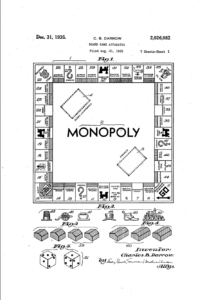



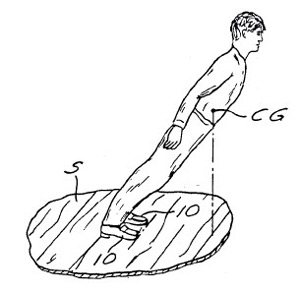 In 1993, singer and entertainer Michael Jackson received a patent on a novel shoe, The shoe includes a cut-out in the heel, which an entertainer slides on and off a nail head in the stage. The nail head grabs the heel and allows the entertainer to perform apparently gravity defying leans.
In 1993, singer and entertainer Michael Jackson received a patent on a novel shoe, The shoe includes a cut-out in the heel, which an entertainer slides on and off a nail head in the stage. The nail head grabs the heel and allows the entertainer to perform apparently gravity defying leans. Born in Ghana, Dr. Mensah is the Chairman of Supercond Technology Inc. of Norcross, Georgia. Holder of over a dozen United States and International patents, Dr. Mensah’s inventions span the fields of fiber optics to guided vehicle systems. His work with SMART weapons, like the Patriot missile, were critical to the success in the Gulf War.
Born in Ghana, Dr. Mensah is the Chairman of Supercond Technology Inc. of Norcross, Georgia. Holder of over a dozen United States and International patents, Dr. Mensah’s inventions span the fields of fiber optics to guided vehicle systems. His work with SMART weapons, like the Patriot missile, were critical to the success in the Gulf War.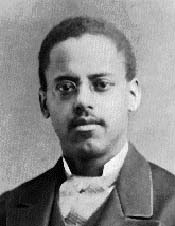 Everyone knows Thomas Edison invented the light bulb, but few know that it took African American inventor Lewis Latimer to come up with the carbon filament that made it practical. Edison’s original draftsman, Latimer drafted the plans for Alexander Graham Bell’s telephone. Working many late nights with Bell, Latimer worked tirelessly to file a patent on Bell’s telephone mere hours before the filing of a similar patent by a rival inventor.
Everyone knows Thomas Edison invented the light bulb, but few know that it took African American inventor Lewis Latimer to come up with the carbon filament that made it practical. Edison’s original draftsman, Latimer drafted the plans for Alexander Graham Bell’s telephone. Working many late nights with Bell, Latimer worked tirelessly to file a patent on Bell’s telephone mere hours before the filing of a similar patent by a rival inventor. Elijah McCoy patented dozens of ways to lubricate machinery. One advantage McCoy’s devices had over the competition, was that his inventions made it possible to lubricate machinery while it was running. This eliminated downtime maintenance and increased factory profits. One of his most famous inventions was an oil dripping cup. The oil dripping cup was so wildly successful that competitors worked diligently to copy it. Nothing however, worked as well as the original. That is why, even today, we ask for “The real McCoy.”
Elijah McCoy patented dozens of ways to lubricate machinery. One advantage McCoy’s devices had over the competition, was that his inventions made it possible to lubricate machinery while it was running. This eliminated downtime maintenance and increased factory profits. One of his most famous inventions was an oil dripping cup. The oil dripping cup was so wildly successful that competitors worked diligently to copy it. Nothing however, worked as well as the original. That is why, even today, we ask for “The real McCoy.” Born in Harlem, Dr. Bath has become an internationally acclaimed ophthalmologist and surgeon. Not content to rest on her laurels, Dr. Bath has dedicated her life to the treatment and prevention of blindness in African-Americans. A pioneer in laser cataract surgery, her laser-powered Laserphaco Probe allows physicians to vaporize sight stealing cataracts in minutes.
Born in Harlem, Dr. Bath has become an internationally acclaimed ophthalmologist and surgeon. Not content to rest on her laurels, Dr. Bath has dedicated her life to the treatment and prevention of blindness in African-Americans. A pioneer in laser cataract surgery, her laser-powered Laserphaco Probe allows physicians to vaporize sight stealing cataracts in minutes.
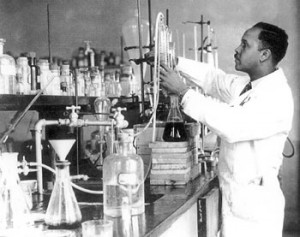 Granted over 100 patents Percy Julian is best known for his innovative synthesis of cortisone from soy beans. His inventions significantly reduced the cost of manufacturing cortisone used to treat rheumatoid arthritis and inflammation. Julian is a 1990 inductee into the National Inventors Hall of Fame.
Granted over 100 patents Percy Julian is best known for his innovative synthesis of cortisone from soy beans. His inventions significantly reduced the cost of manufacturing cortisone used to treat rheumatoid arthritis and inflammation. Julian is a 1990 inductee into the National Inventors Hall of Fame.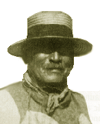 Part Native American and part African American, George Crum never received a patent. He is credited however, with inventing one of this country’s most ubiquitous snack foods, the potato chip. Known for his irascible nature, George Crum earned his living as a cook. One day, the story goes, a businessman entered Moon Lake Lodge, in Saratoga Springs, New York. Not happy with the thickness of the potato slices Crum was serving on that particular day, the businessman sent them back. While customers at the Moon Lake Lodge sometimes sent food back once, they rarely sent them back twice, especially if George Crum was working. Crum took it upon himself to make the meal so unpalatable, patrons would dare not try their luck a second time. In this particular case, Crum sliced the potatoes as thin as possible, fried them in oil until they were hard. Crum then doused the potatoes in enough salt to make them what he believed would be inedible. To his chagrin, the customer loved the new “potato crunches.” Crum began serving the snack at his own restaurant. Since Crum had no patent, Crum did not share in the profits from what others have turned into a multi-billion dollar industry.
Part Native American and part African American, George Crum never received a patent. He is credited however, with inventing one of this country’s most ubiquitous snack foods, the potato chip. Known for his irascible nature, George Crum earned his living as a cook. One day, the story goes, a businessman entered Moon Lake Lodge, in Saratoga Springs, New York. Not happy with the thickness of the potato slices Crum was serving on that particular day, the businessman sent them back. While customers at the Moon Lake Lodge sometimes sent food back once, they rarely sent them back twice, especially if George Crum was working. Crum took it upon himself to make the meal so unpalatable, patrons would dare not try their luck a second time. In this particular case, Crum sliced the potatoes as thin as possible, fried them in oil until they were hard. Crum then doused the potatoes in enough salt to make them what he believed would be inedible. To his chagrin, the customer loved the new “potato crunches.” Crum began serving the snack at his own restaurant. Since Crum had no patent, Crum did not share in the profits from what others have turned into a multi-billion dollar industry.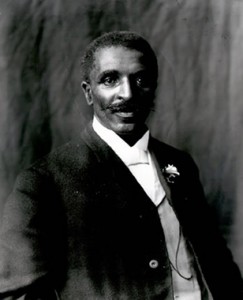


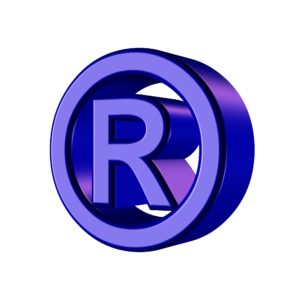





Recent Comments